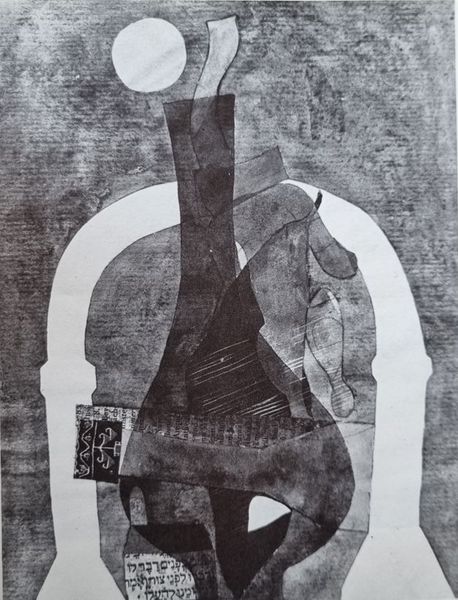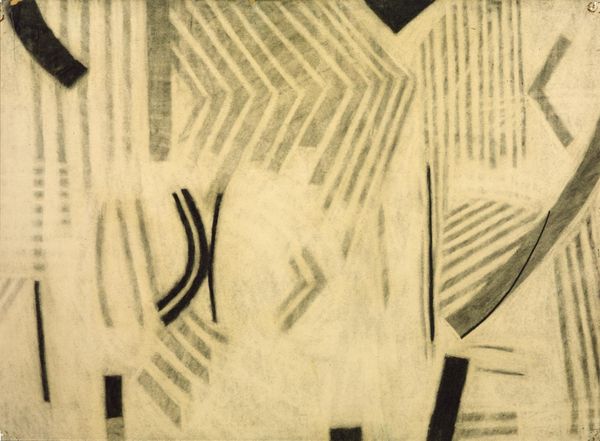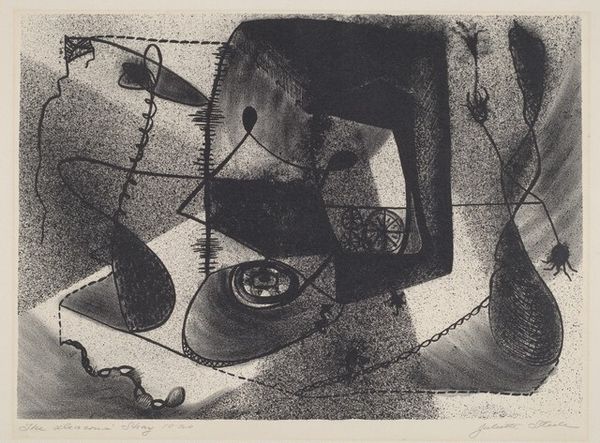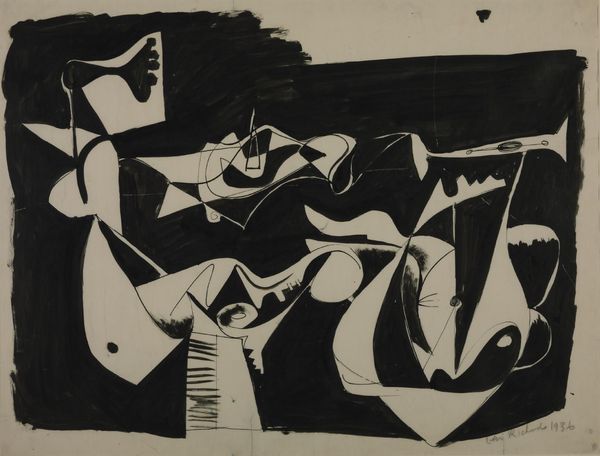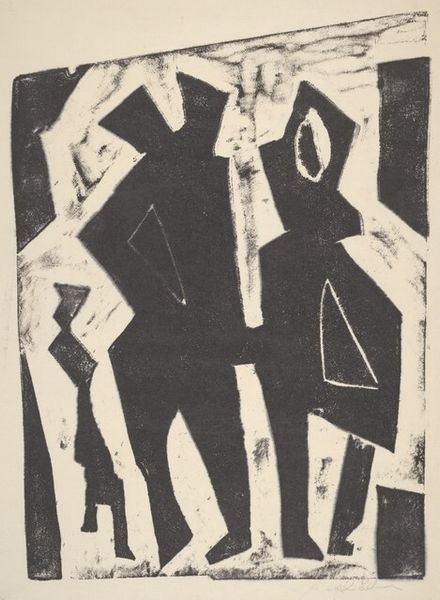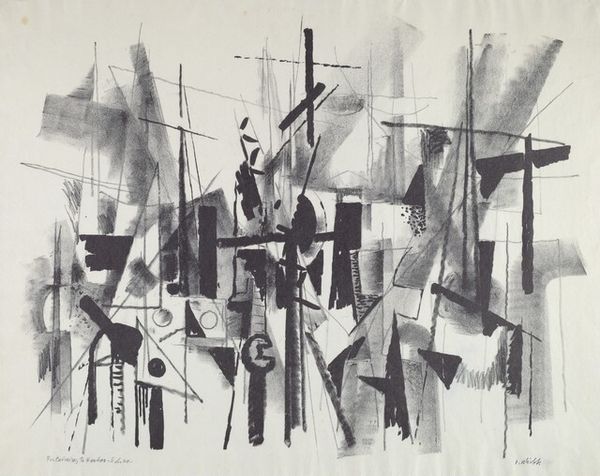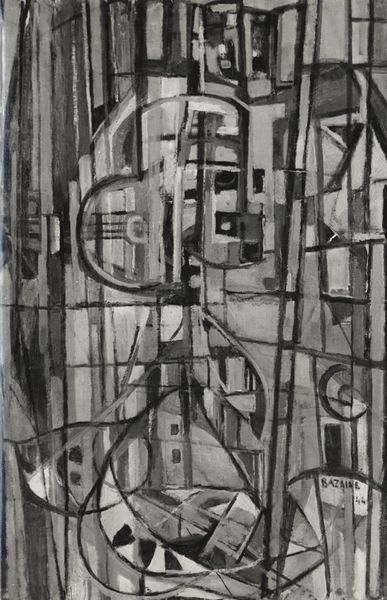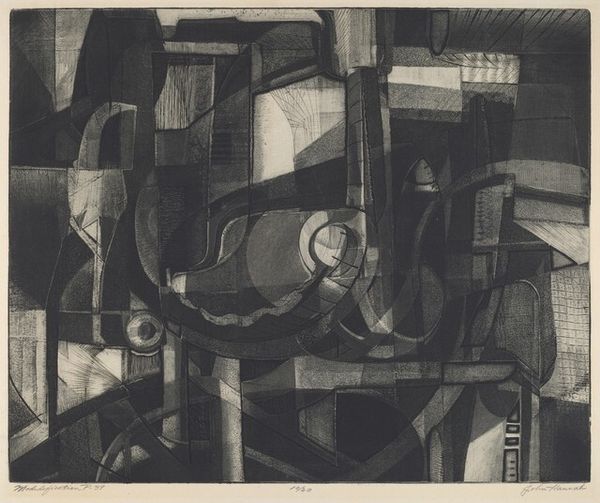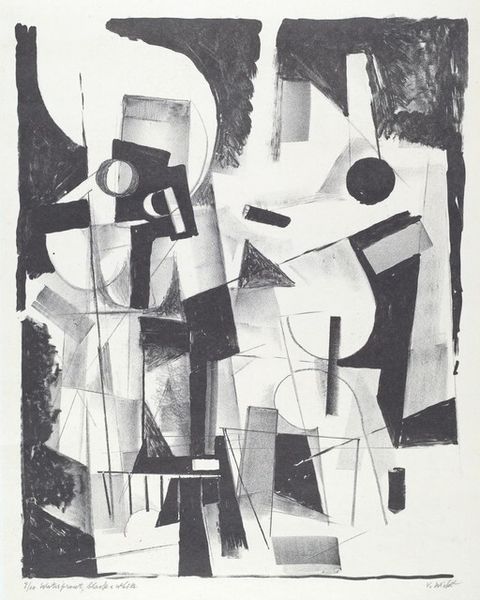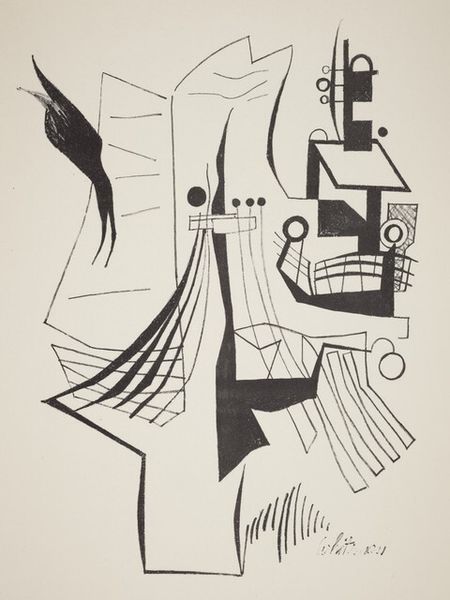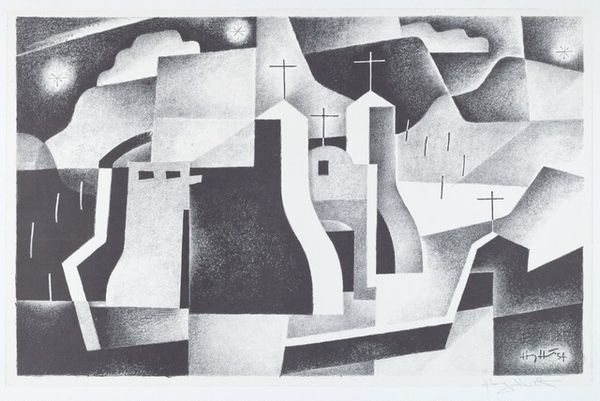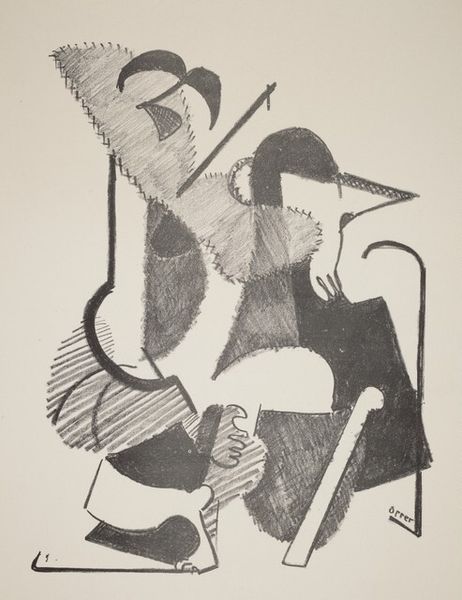
Copyright: Public domain
Curator: Right now, we are looking at a drawing called “Építészeti Motívumok Kisded Torzóval,” or “Architectural Motifs with Child’s Torso,” created in 1937 by the Hungarian artist Lajos Vajda. The piece is charcoal on paper, rendered in stark black and white. Editor: Wow, it’s intensely fragmented. The contrasts give me a sense of unease, like a building collapsing into a child's drawing. Curator: That sense of fragmentation, of fractured realities, is very much at the heart of Expressionism, which Vajda explored. You see geometric shapes colliding with more organic forms – the 'architectural motifs' and what appears to be a deconstructed human figure. Notice the eye motif that keeps reappearing. Editor: Yeah, the eye... there’s almost a haunting quality. Is this how trauma looks? Because I can't shake that impression—all these sharp edges, and that vulnerable little figure lost in the chaos. Curator: Trauma certainly permeated the period between the wars. Vajda synthesized avant-garde movements like Cubism and Surrealism to express the anxieties of his time, and on a personal level too; a great number of Hungarian Jews perished in WWII. Editor: So those motifs are meant to jar us, make us aware of the psychological disruption. But also the persistence of visual memories, those repeating images echoing. Do you think the architectural themes represent the promise or the decay of civilization? Curator: I think Vajda invites that interpretation. Architecture can signify both order and confinement, and he blurs the boundaries here. Note that the geometric forms almost trap the vulnerable figurative elements. The work could be read as a commentary on the limitations imposed by societal structures upon individual growth and innocence. Editor: I get the sense it's about feeling boxed in, all those shapes becoming constraints... or are they building blocks? Curator: That’s the unresolved question, isn’t it? Is Vajda depicting disintegration, or the potential for rebuilding? Editor: Rebuilding out of fragments. Still... feels ominous. Curator: Ultimately, Vajda offers no easy answers, but his charcoal drawing confronts us with the raw, unresolved tensions of a world in turmoil, seen through a filter of haunting and powerful symbolism. Editor: I'll be thinking about this one. The child's torso… it definitely tugs at something profound. Thanks.
Comments
No comments
Be the first to comment and join the conversation on the ultimate creative platform.
